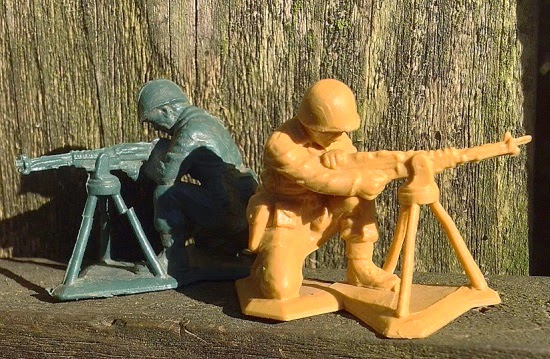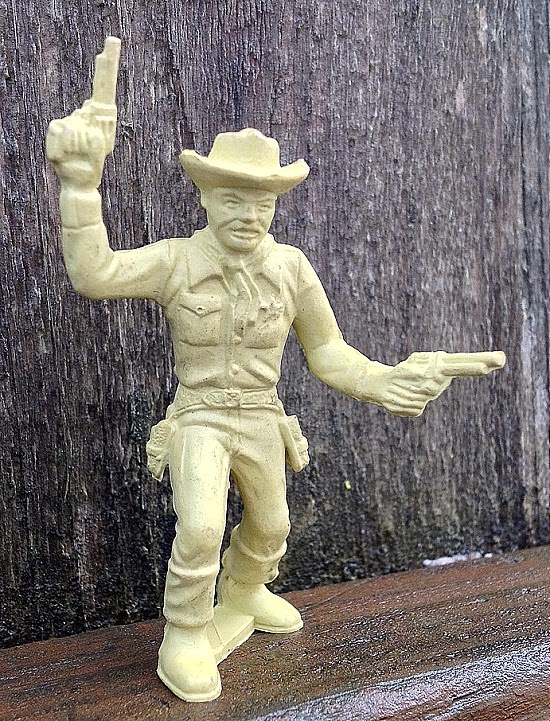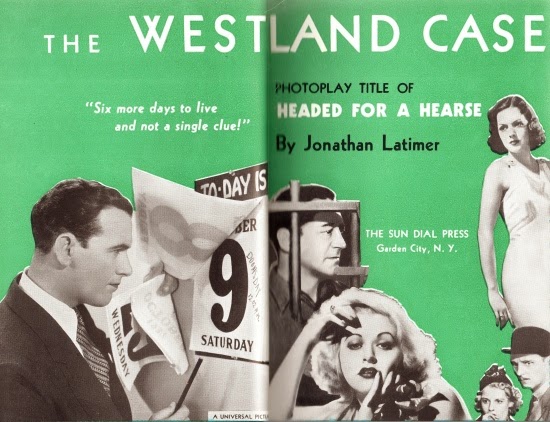I've featured a lot of Cleve F. Adams novels here, and this won't be the last. As I've said before, there's something very appealing about his slightly wacky wit and the distinctive rhythm of his prose. And
The Evil Star, first published in 1944, is even wackier than usual.
Though this book was published under Adams' pseudonym of John Spain, "author of
Dig Me a Grave and
Death is Like That," it has no connection to the other Spain books. Those two feature political fixit man Bill Rye, a character inspired by Ned Beaumont of
The Glass Key.
Our protagonist here is police Lieutenant Stephen McCord, a typical Adams hero and virtual twin of police Lieutenant Stephen McCloud, star of
The Private Eye. But unlike McCloud, and Rex McBride, and their Adams brethren, he does
not have a too-good-for-him girlfriend with a rich father. Instead, he has three beautiful triplets to contend with, and finds himself falling for whichever he's in closest proximity to.
This book is also unusual in that the first character we meet, a funny, likeable cop (and friend of McCord's) gets himself murdered in Chapter 3. Adams books always have a murder or three, but the victims are rarely likeable, and often dead before we know the story begins.
I'm pleased to report that Mr. Chad Calkins, through some astute detective work of his own, has discovered that
The Evil Star was based on the story "Triple Threat," published under Adams own name in the April 1940 issue of
Detective Story Magazine. Though much shorter, that tale follows the same basic plot. The main difference is that the story triplets are named Constance, Hope and Valour, while in the novel they're rechristened Faith, Hope and Charity.
Next week, they'll be right here on the Almanack.












.jpg)







































